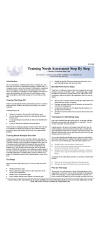Servant Leadership – A Collaborative Approach
Servant leadership is an approach to leadership coined and explained by Robert Greenleaf who suggests that effective leadership is not about doing something TO followers, or manipulating people, but involves serving their needs (hence the use of the word servant).
That’s not to say the needs and goals of an organization come second to what the employees in that organization want, but that the servant leader becomes responsive, aware of and in touch with those in the organization that actually do the work of the organization. It becomes a balancing process.
One of the reasons servant leadership makes a great deal of sense is that it recognizes a reality of human functioning. Whether leaders acknowledge it or not, power, per se is a collaborative element. That is, a leader’s power derives from the willingness of people in that organization to recognize this power and authority, and to work with a leader. In situations where a leader loses legitimacy, and respect, and where employee refuse to “do as they are told”, it becomes obvious that leadership power is at least, a partial myth.
In other words, servant leadership tells us that leadership is collaborative and cooperative, and those that follow consent to be lead, and cannot easily be coerced into following, particularly over the long haul. Building trust, using empathy, listening to and being responsive to followers, and the ethical use of power are cornerstones of servant leadership.






